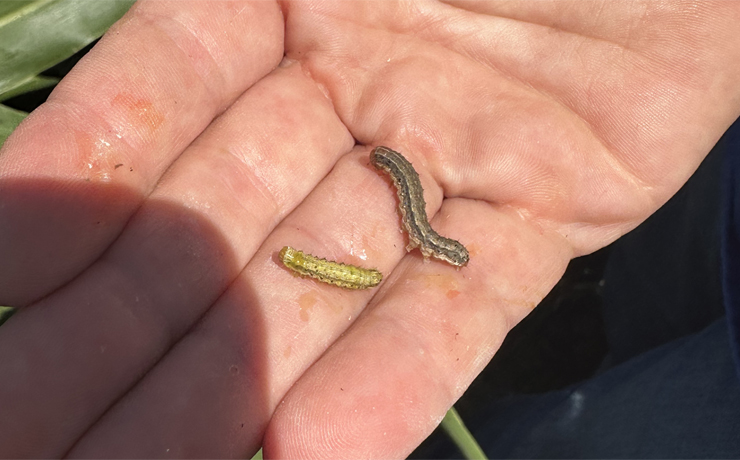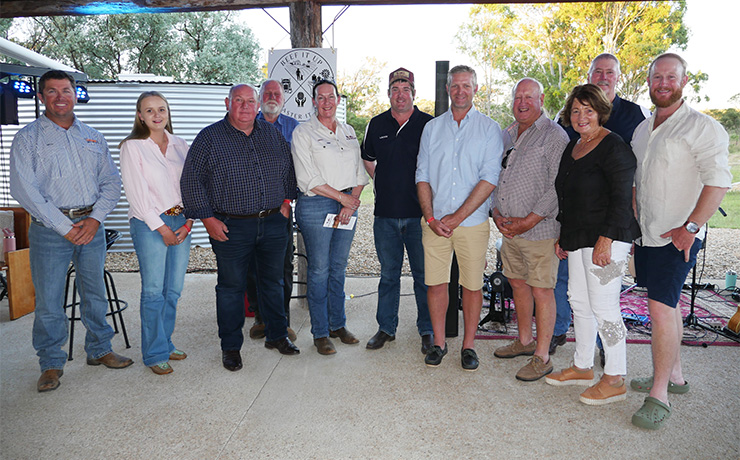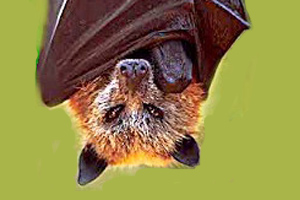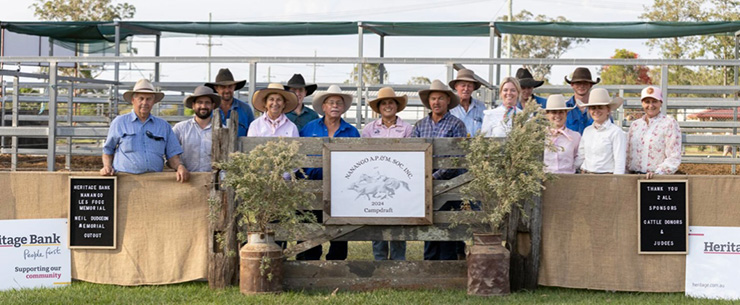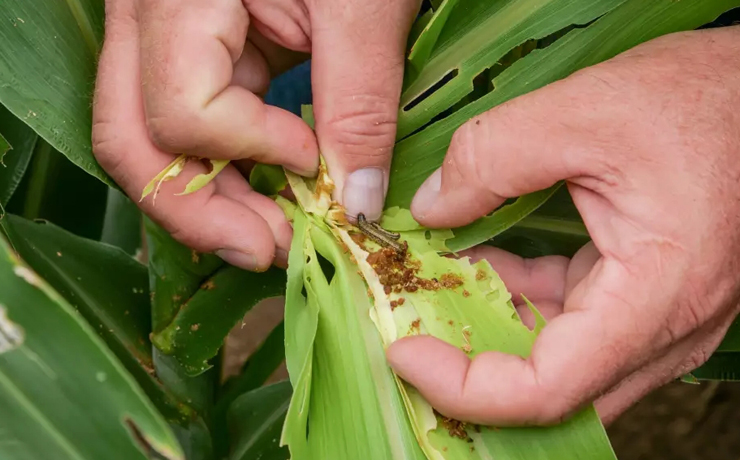

(Photo: Wikipedia)
February 9, 2024
Fall armyworm (FAW) are currently being detected at unprecedented levels – and causing significant damage – in sorghum crops across Queensland.
The highly invasive pest was first detected in the Torres Strait in 2020.
It has since spread through much of northern Australia and into northern NSW, with experts saying it is impossible to eradicate.
FAW poses a major threat to broadacre crops including maize and sorghum.
Queensland Department of Agriculture and Fisheries (DAF) principal entomologist Melina Miles has urged growers to be alert – but not alarmed – and take a considered approach to making decisions about the need for control.
“We know that FAW can be devastating and we’re seeing significant crop damage in southern and Central Queensland in sorghum,” Dr Miles said.
“We understand the level of damage in crops this year is causing concern amongst growers, but I encourage them to work with their advisers to accurately assess FAW infestations before taking action.”
Dr Miles’ work is part of a GRDC and DAF research project aimed at developing FAW economic thresholds and management guidelines for sorghum and maize.
Field trials in maize and sorghum are under way at UQ’s Gatton campus.
“In many regions, rain in December has meant later crops, resulting in the coincidence of high FAW activity and susceptible crops,” Dr Miles said.
“It is also possible that the weather systems associated with the recent cyclones has facilitated the movement of large FAW populations into central Queensland.
“We’re in the early stages of developing robust management recommendations for this pest and research is ongoing, but what we do know is that FAW populations build up between October and March.
“Where they can, growers are adopting an early-sowing strategy to largely avoid severe damage, and this has been effective in 2021-23.
“This season we have late crops planted on the December rain. Because of that, more growers are seeing high FAW populations and damage in crops from emergence throughout the vegetative stages.
“Current information indicates that peak FAW numbers typically occur from mid-summer through autumn. However, we saw high FAW activity as early as October this season and consequently there has been more time for the population to build up to higher levels.”
GRDC Northern Panel member Belinda Chase said the impact of FAW in Central Queensland had been heartbreaking.
“In the worst affected areas, we are seeing whole plant defoliation and have had observations of larvae then moving below ground and attacking the base of the stem,” Ms Chase said.
GRDC Biosecurity Manager Callum Fletcher said GRDC was committed to supporting growers through targeted research about management practices and options for more effective control.
“Most of the current information available on FAW comes from countries who manage infestations primarily through the development of genetically modified (GMO) crops,” Mr Fletcher said.
“Australia does not have GMO sorghum or maize crops and is unlikely to do so in the near future, so growers are reliant on insecticides and biological control to manage FAW infestations in susceptible crops.
“This GRDC research aims to help growers manage FAW effectively and economically, without applying excessive selection pressure through the overuse of insecticides.”
Related articles:
- More Permits To Target Pest Moth
- Fall Armyworm Can’t Be Eradicated
- CSIRO Leads Armyworm Project
- Pest Moth In Bundaberg
- Fall Armyworm Moves Southwards
- Pest Moth Spreads In NQ
- Pest Moth Found In Torres Strait
